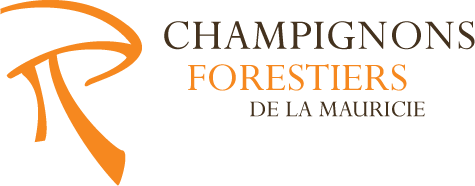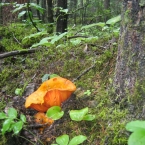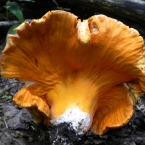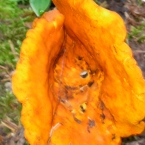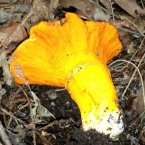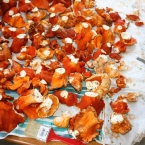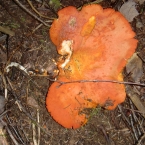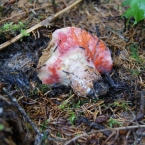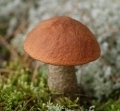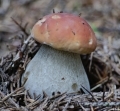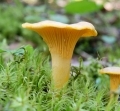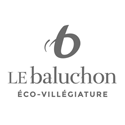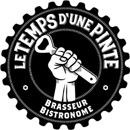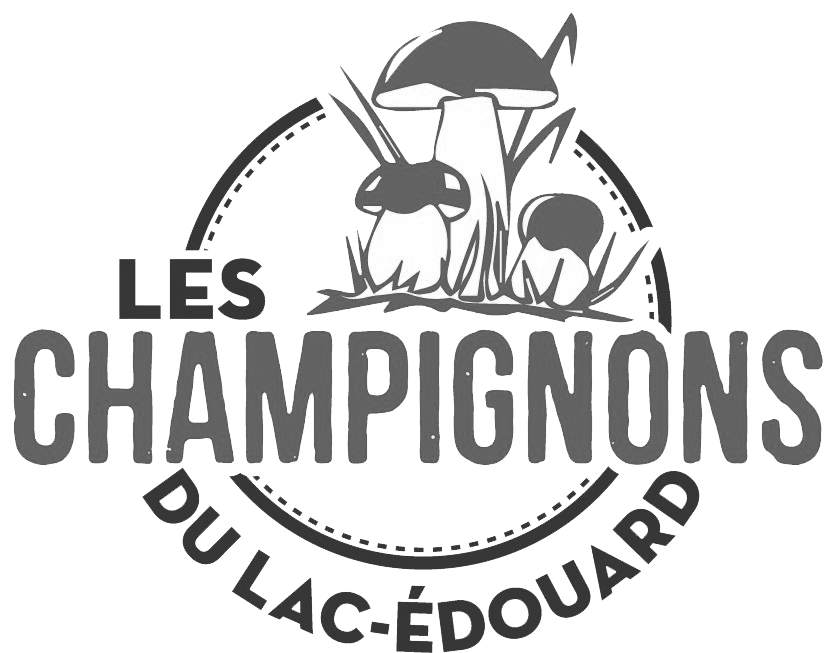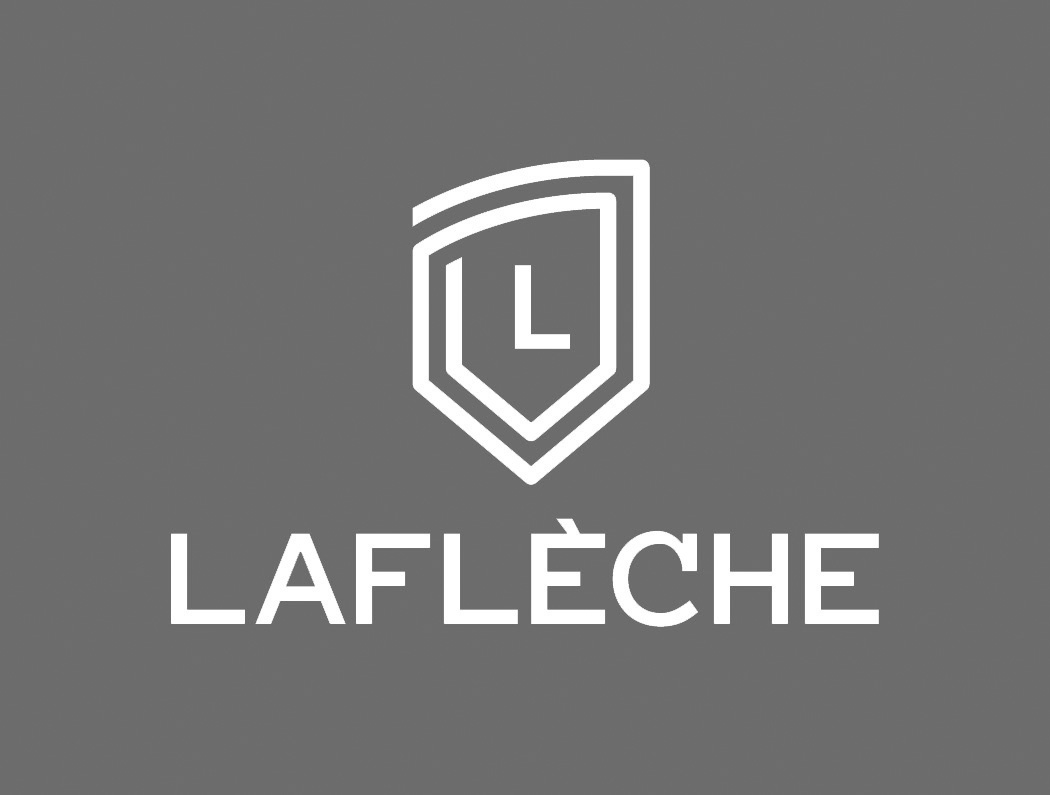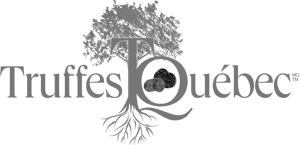The Lobster Mushroom usually grows along old logging roads 1 2 4, often in the roads themselves 3, where people’s feet, horses’ hooves and automobile wheels have spread its spores in the past. It implants itself in sandy soil alongside conifers 1 2 and enjoys moist locations where alders are present. In the forest, it will often spread in areas where forestry occurred or old logging campsites existed. It is frequently found near chalets and campgrounds. Its abundance is often linked to human activity.
The Lobster Mushroom results from the combination of two fungi whose mycelia live in companionship in the soil of the forest floor: the Short-stemmed Russula and Hypomyces lactifluorum. The Hypomyces completely transforms the Russula’s fruit bodies 18 19, which take on multiple shades of orange, leaving only traces of the original Russula’s gills 6 to 11.
The resulting fruit bodies have firm flesh that is completely white and of a very special texture 12 13. If the flesh is not firm, the fruit body may be too old to be picked – very rarely, this may be another species of Russula or Milkcap that has been invaded by the Hypomyces and could cause poisoning. If the fruit body does not have firm white flesh, it must be left at the site. In some parts of southern Quebec, fruit bodies are more yellow in colour 14 than orange.
A great harvest! 15 16 17 When they are picked, fruit bodies are summarily cleaned and stems are cut off. Back at home, they are washed with a vegetable brush under a jet of cold water and left to dry to remove surface water and prevent the growth of bacteria and mould. Transportation and storage are always in refrigerated conditions.
The Short-stemmed Russula is the host fungus 18 19. Born deep underground 12, its primordia are protected from heat and drought. Often the cap is full of soil particles 18 collected as it pushed up through the earth to spread along the surface. Occasionally, its fruit bodies form on the surface, but they still retain the typical form shown here. The cap, rolled down at first, opens when fully mature. New troops of Lobster Mushrooms can be created by inseminating Short-stemmed Russulas that have not yet been colonized by Hypomyces 20.
When spores are emitted, the exterior of the fruit bodies is largely covered by white powder 9 21; often spores are emitted in a refrigerated room. When the fruit bodies take on a more intense red colour, they are dead and have become unfit for consumption 22 23.
Even if it is rarely parasitized by insects and nematodes, the Lobster Mushroom has enemies. Slugs cause the greatest damage by eating the mushroom’s exterior 24; grooves or depressions they create will return to the fungus’ original colour after a few days and go unnoticed. These mushrooms do not lose their culinary qualities and are still edible, but those that are too badly infested by mould 25 26 and bacteria 27 must remain at the site.
Photos : Fernand Miron, Marcel Otis, École forestière de La Tuque, Guy Lefebvre, Nancy Hinton, François Brouillard, Jean-Paul Paradis.
Habitats where you can find this species :

